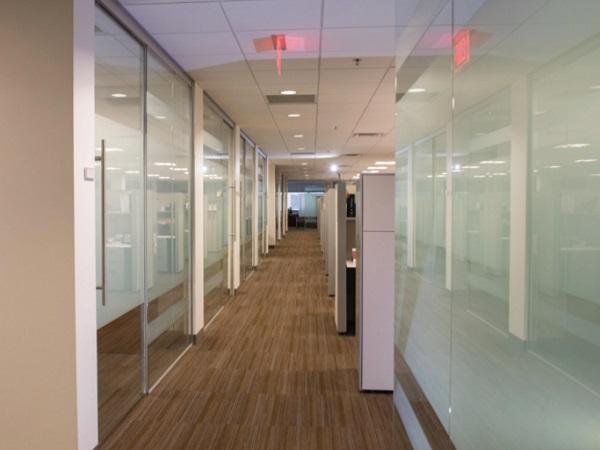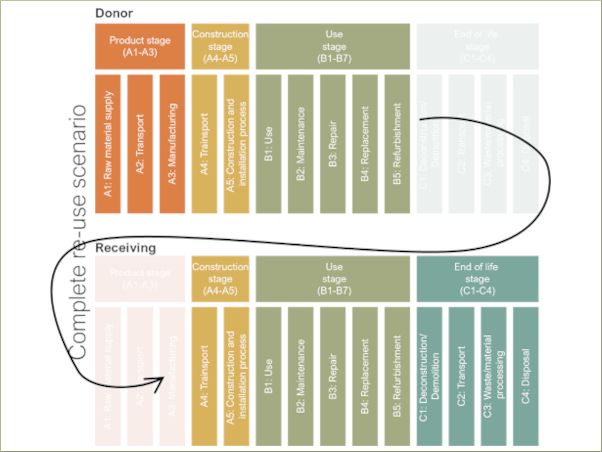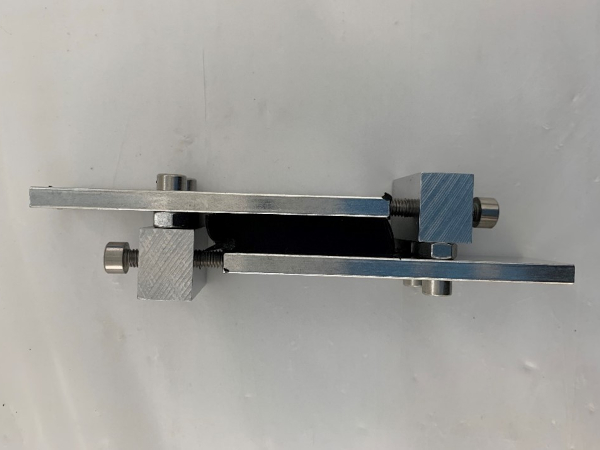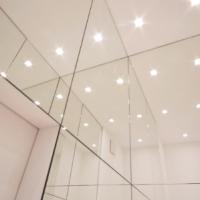INTRODUCTION
Office design has the power to impact productivity, foster collaboration, bolster creativity, attract new clients, and help attract and retain employees. Gone are the days when office interiors meant little more than rows of cubicles. Modern office design now ranges from traditional, enclosed offices to fully open plans, with every possible design concept in between.
As companies strive to make their workplaces more flexible, interior glass has become a popular choice. Glass partitions display a contemporary appearance, provide natural light and views, and offer degrees of sound and visual privacy depending upon the glass finish selected.
Interior glass partitions may be traditionally constructed in place permanently or may be considered demountable. Demountable interior glass partitions have become a common choice due to potential tax benefits.
WHAT’S DEMOUNTABLE GLASS?
Demountable interior glass systems are made of non-load-bearing, non-permanent glass partitions that can be removed when a tenant vacates a space. They can also be rearranged easily to offer a client workplace flexibility.
Demountable interior glass wall systems are available as stick built or unitized. Stick-built systems are constructed in place by a glazier. Unitized systems are prefabricated in a factory and then assembled on site. A multitude of glazing and framing options in both stick-built and unitized systems offer aesthetic variety while optimizing sustainability and functionality in the commercial interior environment in less space than traditional framed and sheathed walls.
While traditional glazing systems are found in CSI Division 8: Doors and Windows, most interior demountable glass partitions are found in CSI Division 10: Furniture, Fixtures, and Equipment. AGI member glaziers perform work in both divisions and can serve as valuable resources for designers considering demountable glass partition systems.

SYSTEMS FURNITURE
Commercial office furniture manufacturers have embraced the look of glazing and begun offering glass demountable partitions as part of their systems interiors and furniture collections. Whether incorporated into modular components or provided as individual elements, glass provided by a furniture dealer is generally NOT installed by a professional glazier.
AGI glaziers can partner with architects and interior designers early in the design process to offer recommendations that maximize value at the best price. Glaziers can develop, document, and fabricate custom solutions that meet aesthetic and functional goals while supporting accelerated tax depreciation benefits.
To understand the differences between glass and systems furniture, request AGI’s Interior Demountable Walls fact sheet or detailed Interior Demountable Walls Expertise booklet describing glazing types and systems, features and controls, cautions and concerns, and the many advantages professional glaziers provide. AGI also offers an Interior Glass Guide Specification with sample spec language and instruction.
ACCELERATED DEPRECIATION
Demountable partitions are considered a tenant’s personal property, such as furniture, qualifying for accelerated tax depreciation versus longer depreciation for stick-built permanent walls or fixtures. Systems installed by a glazing contractor qualify for accelerated depreciation. Items do not need to be purchased from a furniture vendor to qualify.
QUALIFICATIONS
Qualifications for accelerated tax depreciation include:
- Not intended to remain permanently in place.
- Installed and removed quickly and with little expense.
- No damage to building upon removal.
- Non load-bearing.
- Serves the passive function of protecting tenant assets.
- Not installed during building construction.
- Not meant to remain when a tenant leaves.
TWO ACTS
The Protecting Americans from Tax Hikes Act (PATH Act) of 2015 changed some of the depreciation rules on qualified leasehold and other improvements. Generally, the cost of commercial real estate improvements is claimed over 39 years using the straightline method of depreciation. Thanks to the PATH Act, qualified leasehold, restaurant, and retail property improvements can be depreciated over 15 years using the straight-line method.
Tax reform under the Tax Cuts and Jobs Act (TCJA) of 2017 also has significantly impacted individuals and businesses. Tax rules have changed, and companies should be aware of how different accounting methods can impact their tax obligations, especially when it comes to depreciation methods for personal property and leasehold improvements.
Ceilings, doors, and non-load-bearing walls fall into the type of improvements that may qualify for accelerated depreciation. Demountable interior glass partitions fall neatly into this category.

ADDITIONAL TAX BREAKS
For certain categories of realty improvements, taxpayers may be entitled to other tax breaks, such as:
- Expensing under Code Section 179 as part of the cost of the improvements.
- Bonus first-year depreciation deductions of the portion of the cost that isn’t (or can’t be) expensed.
- 15-year recovery period of the cost that isn’t (or can’t be) expensed or recovered via bonus first-year depreciation.
DEMOUNTABLE DEPRECIATION
Since the IRS classifies demountable walls as furniture and fixtures, the cost can be depreciated over seven years instead of 39 years. Demountable walls generally qualify for the Section 179 deduction. The combination of the Section 179 tax deduction with bonus depreciation may allow a company to expense 100 percent of a demountable wall’s cost in the first year it is placed into service (if it is done after September 27, 2017, and before January 1, 2023).
The bonus depreciation percentage for qualified property acquired before September 28, 2017, and placed in service before January 1, 2018, remains at 50 percent. Special rules apply for longer production period property.
Under Section 179 rules, qualifying assets that cost under $500,000 can be written off 100 percent in the first year. A bonus depreciation deduction can be used for assets costing more than $500,000. Companies can benefit from both Section 179 and the bonus depreciation deduction regardless if they pay cash or finance an asset.
STATE-LEVEL DIFFERENCES
Section 179 and bonus depreciation deductions are treated differently at the state level. Some states eliminated these deductions. Instead they have a more traditional depreciation deduction. Other states use a combination of these deductions and depreciation deductions.
A few states have not decided on what approach to take. Therefore, it is advisable to check the depreciation laws in each state in which you do business to ensure that you are in compliance.
CAUTIONS
Business owners need to know that the 15-year recovery period is not an elective. Failure to properly depreciate qualified real property could cause other property to be reclassified for longer recovery periods. Larger businesses may not qualify for expensing, but they may benefit from bonus depreciation and the 15-year recovery period.
MORE INFORMATION
The PATH Act substantially liberalized the expensing break for qualifying real estate improvements. It also made it easier for improvements to qualify for bonus first-year depreciation, but in the process may have caused some complications.
The tax laws on depreciation are complicated. For detailed information, view the full white paper, “Depreciation Methods for Personal Property and Leasehold Improvements,” prepared for AGI and the Architectural Glass and Metal Association by Marty McCarthy, CPA, CCIFP.
 Some information for this Devil’s Detail was provided by McCarthy & Company, PC.
Some information for this Devil’s Detail was provided by McCarthy & Company, PC.
MCCARTHY & COMPANY, PC
McCarthy & Company, PC, is an accounting and advisory firm that prides itself on providing clients with a high level of personalized service. Since 1967, the firm’s priority has been to ensure that clients continually strengthen their financial position.
McCarthy & Company is well-recognized for its expertise serving clients ranging in size from small family-owned businesses to midsize companies and global multi-million-dollar corporations throughout Pennsylvania, New Jersey and New York.
The firm is a trusted advisor to businesses in the construction, real estate, professional services, waste management, logistics, and service industries, as well as municipalities. In addition to traditional assurance, accounting, tax and business advisory services, McCarthy & Company specializes in sales and use tax, long-term financial planning, employee benefit plan audits, nexus studies, and tax credit analysis.
Marty McCarthy, CPA, CCIFP, is the managing partner of McCarthy & Company, PC, and a thought leader in the construction industry. A 1993 graduate of Villanova University with a Bachelor of Science degree in accounting, Marty holds the well-respected Certified Construction Industry Financial Professional (CCIFP) designation from the Institute of Certified Construction Industry Financial Professionals (ICCIFP).
He is a member of the American Institute of Certified Public Accountants (AICPA) and Pennsylvania Institute of Certified Public Accountants (PICPA), where he serves on the Council and the Construction Industry Conference Committee. Marty is also a member of the Construction Financial Management Association (CFMA), National Association of Surety Bond Professionals (NASBP), Associated Builders and Contractors (ABC), Construction Association of Eastern Pennsylvania (CAEP), and Utility Transportation Contractors Association (UTCA).
About the Devil’s Details
The AGI educational series illustrates and describes common glazing challenges as a means to communicate best practices for the design and construction industry, not as a sole source for design guidance. AGI recommends design professionals consult with an AGI contractor regarding specific project challenges. AGI contractor profiles may be accessed at www.theagi.org.




















